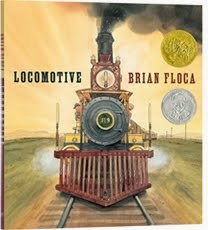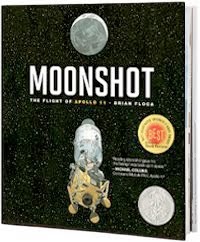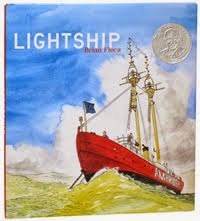
Monday, January 31, 2011
These boots are made for...

Countdown: Apollo 14
Today, January 31, 2011, marks the 40th anniversary of the launch of Apollo 14, flown by astronauts Alan Shepard, Edgar Mitchell, and Stuart Roosa.
There’s no Apollo astronaut without an extraordinary story behind how he got to the Moon, but Shepard’s may be the one to beat. Shepard was a Naval Academy graduate, World War II veteran, graduate of the United States Navy Test Pilot School, and test pilot. When NASA invited 110 of the country’s best pilots to apply for astronaut training in 1959, Shepard was one of seven chosen.
On May 5, 1961, Shepard was strapped into the Mercury capsule Freedom 7, atop a Redstone rocket, prepared to become the first American in space. Space then felt central to the nation’s future; a country’s exploration of this new frontier served as a sort of shorthand for its ambition, its technical capability, its willingness and its ability to lead in the world. On this new field, the Soviet Union seemingly could do no wrong; in 1957 the Soviets had vaulted the first artificial satellite into space. They had followed up with other successes, including putting the first man into orbit. For over three years the United States had stumbled in second place.
On the day of Shepard’s flight, it seemed the stumbling might continue. Shepard was to be sent only on a fifteen-minute suborbital arc, but problems with the weather and the rocket led to delay after delay in the launch. The hours ticked by. Eventually there came one of my favorite bits of dialogue from the entire space program — Shepard, growing impatient, radioed down to the launch crew, “I’m cooler than you are. Why don’t you fix your little problem and light this candle?” I admire that, even if I cannot guarantee that I would use the same words if I myself was perched atop a flying bomb that might or might not have technical problems. (But I guess you never know until it happens to you.)
Shepard’s flight was a triumph, but before he had a chance to fly again, Shepard was stricken with Ménière's syndrome, a condition of the inner ear that results in nausea, vertigo, and disorientation. He remained actively involved in the Apollo program, serving as Chief of the Astronaut Office, but Shepard, as ambitious and competitive as anyone in the program (and that’s saying something), could not fly.
This was Shepard’s frustration for the next five years. Early in 1969, he took his last chance at regaining flight status, checking into a Los Angeles hospital under an assumed name for an experimental surgical treatment — which was a success. On May 7, 1969, his flight status was restored, and that’s how Alan Shepard came to be eligible for, and received, command of Apollo 14.
The mission of Apollo 14 was inherited from the near disaster of Apollo 13 — an exploration of the Moon’s Fra Mauro range, a landscape more interesting and more challenging than the level plains on which Apollo 11 and 12 had landed.
Some of the smaller distinguishing aspects of Apollo 14: The mission saw the addition of a red stripe to the commander’s uniform, to help differentiate the commander and lunar module pilot once they were on the surface. Ed Mitchell attempted ESP contact with Earth on the way to the Moon, and Shepard famously sliced and then hit a golf ball while on the surface. (How far did he hit it? “Miles and miles and miles!”)
The mission contained just enough hiccups to remind one of how incredible and potentially dangerous it was to fly to the Moon, and yet the astronauts did enough on the surface to remind one of how much could be accomplished there, too. The amount of time astronauts spent on the Moon was growing mission by mission, as was the amount and quality of the science they were performing. Ironically, even as individual missions were expanding and becoming more ambitious, the program as a whole was contracting. Two of the projected Apollo missions had been cut the previous summer. The end of Apollo was coming into sight — but it wasn't there yet. Coming in July: a drive on the Moon.
Sources: A Man on the Moon: The Voyages of the Apollo Astronauts, by Andrew Chaikin; http://history.nasa.gov/40thmerc7/shepard.htm; http://www.nasa.gov/mission_pages/apollo/missions/apollo14.html.
And a reminder! This story—and the stories of all the Apollo missions—are told for younger readers in the excellent Mission Control, This is Apollo, by Andrew Chaikin, with paintings by Apollo 12 astronaut Alan Bean.
Thursday, January 20, 2011
Where the West Begins
I’m looking forward to attending the ESC Region 11 Children’s and Young Adult Book Roundup next week, on January 28th, in Fort Worth, Texas. The event has a great line up of authors and illustrators, including Avi, David Davis, Jan Peck, Chris Barton, Don Tate, Jeanette Larson, Mark Mitchell, Claire Dunkle, Jennifer Zeigler, P.J. Hoover, Jessica Lee Anderson, and zombie haiku scribe K.A. Holt. If you’re a librarian in the area (and/or whoever else attends this sort of thing) I hope I’ll see you there! Details are here.
Friday, January 14, 2011
A great week for Ballet for Martha

It was an honor on Monday to learn that Ballet for Martha has been designated a Sibert Honor Book. Then yesterday came news that Ballet for Martha has been chosen by the National Council of Teachers of English to receive the 2011 Orbis Pictus Award for Outstanding Nonfiction for Children. (The name — and I like this a lot — comes from the title of the first book published for children. See it on Google Books, here.)
Thank you to this year’s Sibert and NCTE Orbis Pictus Award committees. I’m grateful to them and grateful that I had the chance to be part of the team that put together this book, so thanks also to Jan Greenberg and Sandra Jordan for their wonderful manuscript, to Neal Porter for thinking of me for the work, to Jennifer Brown for her terrific design skills, and to everyone at Roaring Brook for their support. (That includes an ad in yesterday’s New York Times which featured the book along with Neal’s and Roaring Brook’s Caldecott winner, A Sick Day for Amos McGee. Mainstream media!)
And thank you to everyone who has offered congratulations. They are all appreciated.
Finally, if I’m blogging about this a few days after the fact, it’s not for lack of enthusiasm, it’s because I’ve got a cold, which has made everything here a little foggy, even good news.
The ALA Sibert page is here, and the Orbis Pictus page is here.






